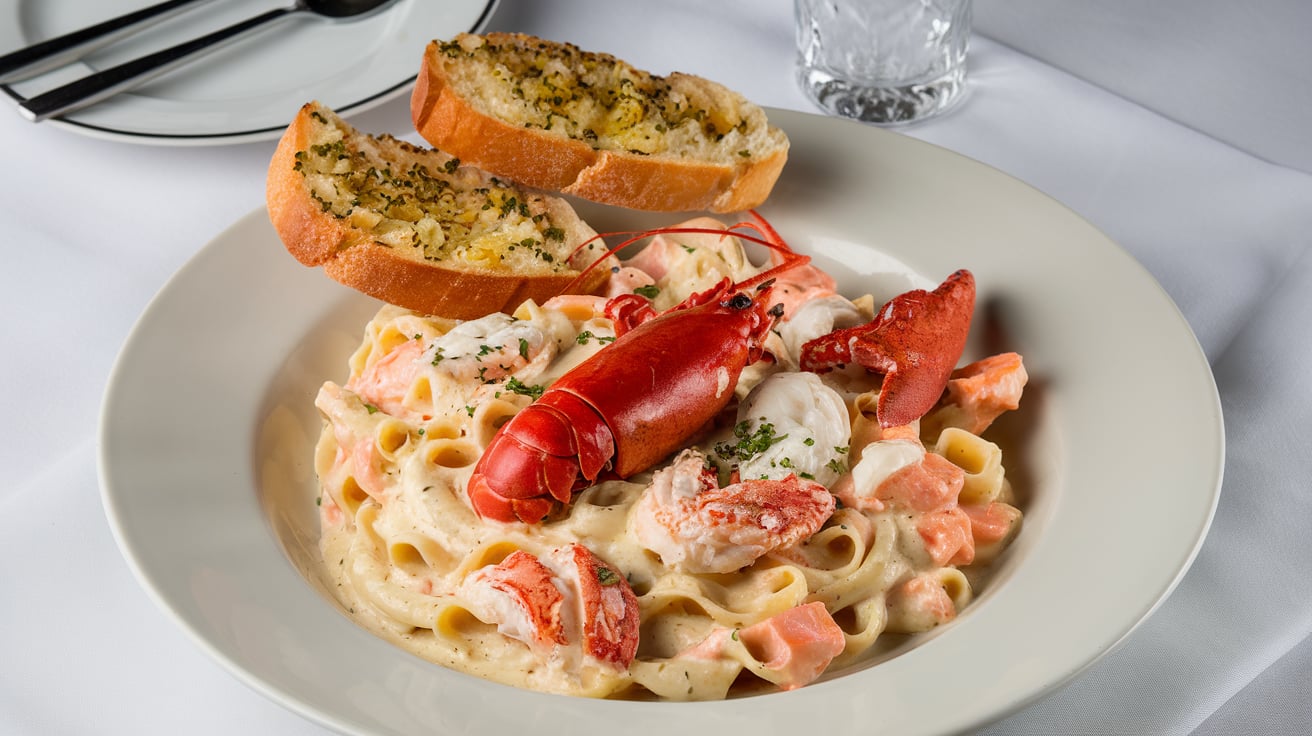Let’s make a creamy and delicious seafood pasta dish! We’ll learn how to make Lobster, Crab, and Salmon Alfredo. It sounds fancy, but we’ll break it down step-by-step. This guide will help you become an Alfredo expert.
We’ll cover everything from start to finish. You’ll learn how to pick the best seafood. We’ll also show you how to make a smooth and creamy sauce. Get ready to impress your family and friends with this amazing meal!
This recipe is perfect for a special dinner. But you can also make it any night you want something extra tasty. We’ll give you all the tips and tricks you need to make it perfect every time. Let’s get cooking!
Why this Lobster, Crab, and Salmon Alfredo is Special
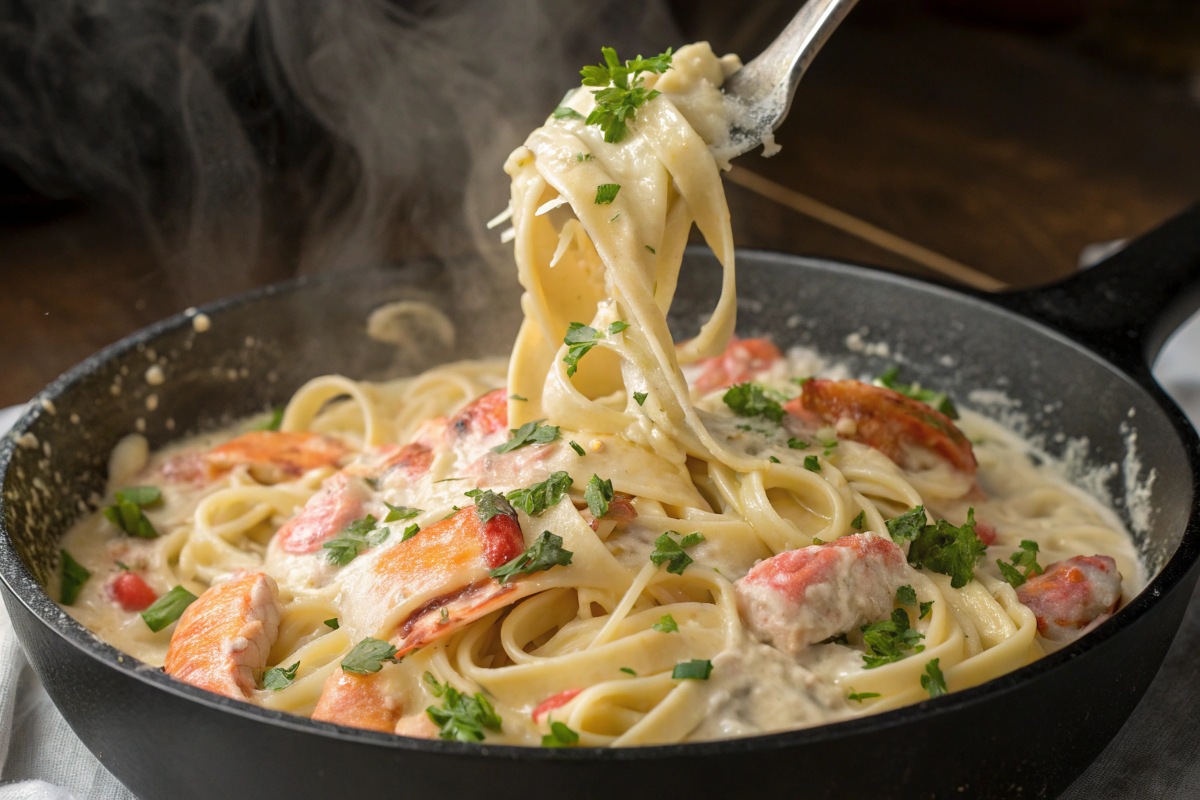
This Alfredo is extra special because it has three kinds of seafood! Lobster, crab, and salmon all add their own yummy flavors. The creamy Alfredo sauce makes everything even better. It’s a delicious mix of tastes and textures that you won’t forget. This dish takes classic pasta to a whole new level!
Gathering Your Ingredients
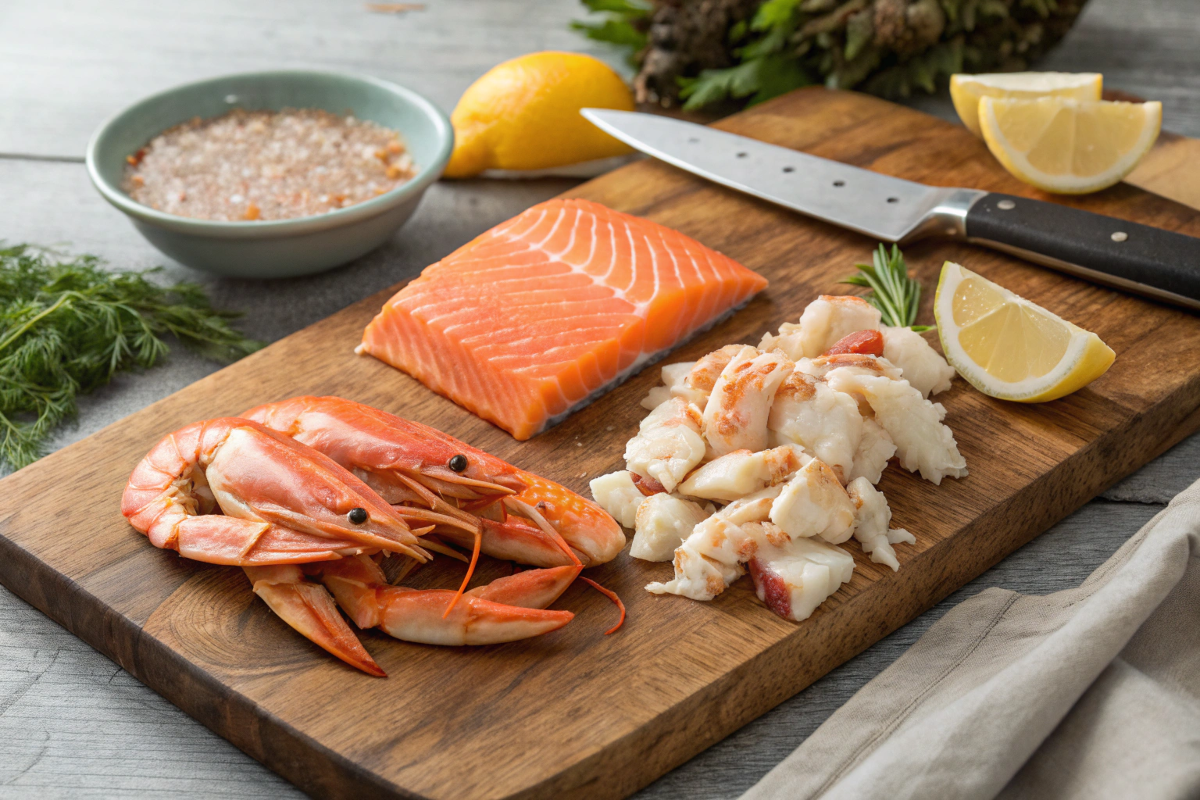
Seafood Selection
Let’s talk seafood! For the best Lobster, Crab, and Salmon Alfredo, use the freshest ingredients you can find. When choosing lobster, look for ones that are active and have a tightly curled tail. They should smell fresh, like the ocean.
For crab, you can buy it already cooked or live. If you buy live crab, make sure it’s moving. Pre-cooked crab meat is a good shortcut. Look for bright white meat with a sweet smell. Salmon should have bright skin and firm flesh. It shouldn’t smell fishy. Ask your fishmonger for help if you’re not sure. Try to choose sustainable seafood options to help protect our oceans.
Pantry Staples and Fresh Produce
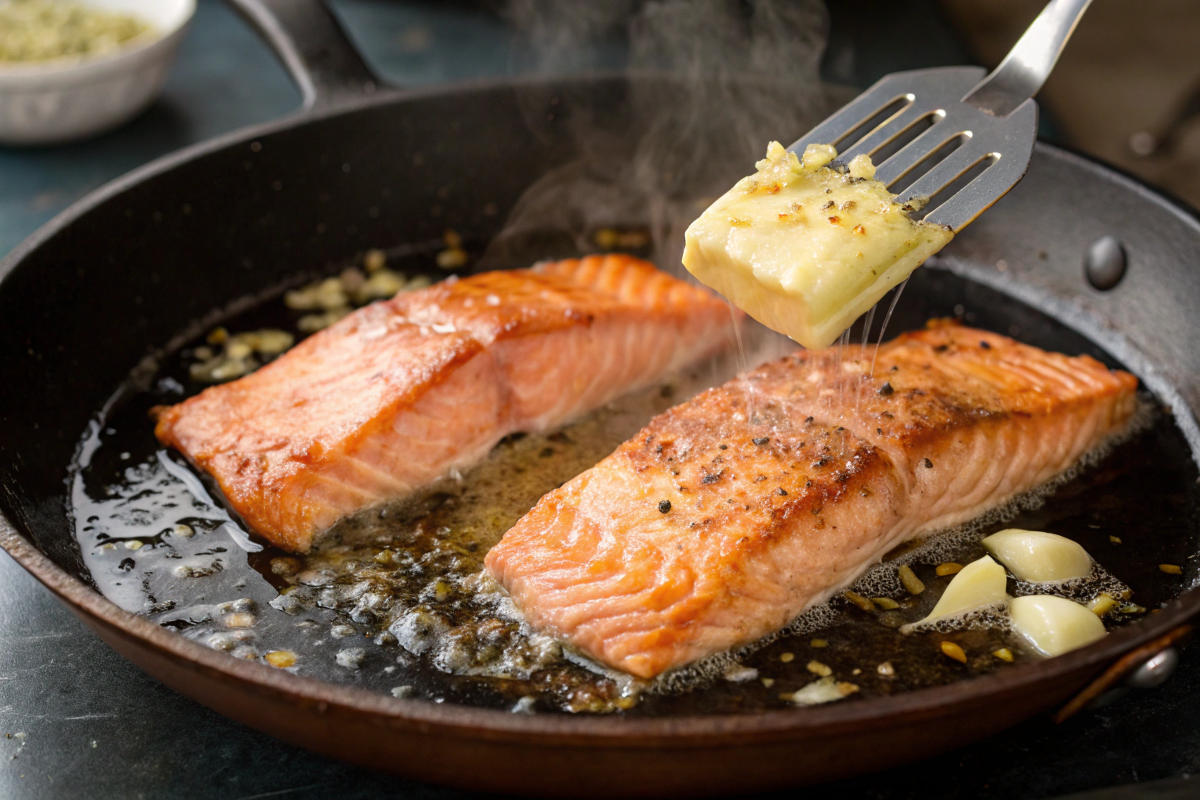
Now for the other ingredients! You’ll need some things from your pantry and some fresh produce. Grab your favorite type of pasta. Fettuccine or linguine work well with this creamy sauce. You’ll also need butter, heavy cream, garlic, and Parmesan cheese.
Fresh lemon juice and some herbs will add brightness to the dish. Parsley and chives are good choices. Don’t forget salt and pepper to season everything just right! For the best flavor, use high-quality ingredients. Real Parmesan cheese makes a big difference.
If you don’t have some ingredients, you can substitute. No heavy cream? Use half-and-half or whole milk. If you’re out of fresh herbs, dried herbs will work in a pinch. Just remember that a little goes a long way with dried herbs. Want to try another great breakfast dish? Check out this Ultimate Breakfast Casserole recipe.
Preparing the Seafood
Cooking the Lobster
To cook lobster, you can boil or steam it. For boiling, put the lobster in a large pot of boiling water. Cook for about 8-10 minutes, depending on the size. For steaming, place the lobster in a steamer basket over boiling water. Steam for about 12-15 minutes.
Once the lobster is cooked, let it cool slightly. Then, twist off the claws and tail. Crack the claws with a nutcracker to get the meat out. Use a fork or lobster pick to remove the meat from the tail. Don’t forget to get the meat from the body too!
Preparing the Crab
If you’re using a whole crab, you’ll need to clean it first. Remove the top shell and the gills. Then, rinse the crab under cold water. You can use a crab cracker to break the body and legs to get the meat out.
If you’re using pre-cooked crab meat, it’s already prepared for you! If it’s frozen, make sure to thaw it completely before using. Canned crab meat is also a convenient option. Just drain it well before adding it to your dish.
Cooking the Salmon
You have a few options for cooking the salmon: pan-searing, baking, or poaching. Pan-searing gives the salmon a crispy skin. Cook it skin-side down in a hot pan for a few minutes per side. Baking is easy – just put the salmon in the oven at 400°F for about 12-15 minutes.
Poaching involves gently cooking the salmon in simmering liquid. No matter how you cook it, make sure the salmon reaches an internal temperature of 145°F. Use a food thermometer to check. This will ensure it’s cooked through and flaky. For a decadent dessert, try these Cheesecake Brownies.
Making the Alfredo Sauce
Classic Alfredo Sauce Base
The base of Alfredo sauce is simple: butter, heavy cream, garlic, and Parmesan cheese. First, melt the butter in a saucepan. Then, add minced garlic and cook until fragrant. Don’t let it brown.
Pour in the heavy cream and bring it to a simmer. Reduce the heat and let it cook for a few minutes. Then, stir in grated Parmesan cheese until it’s melted and the sauce is smooth. Season with salt and pepper to taste. For an extra smooth sauce, you can whisk it constantly while the cheese melts.
Enhancing the Alfredo Sauce with Seafood Flavors
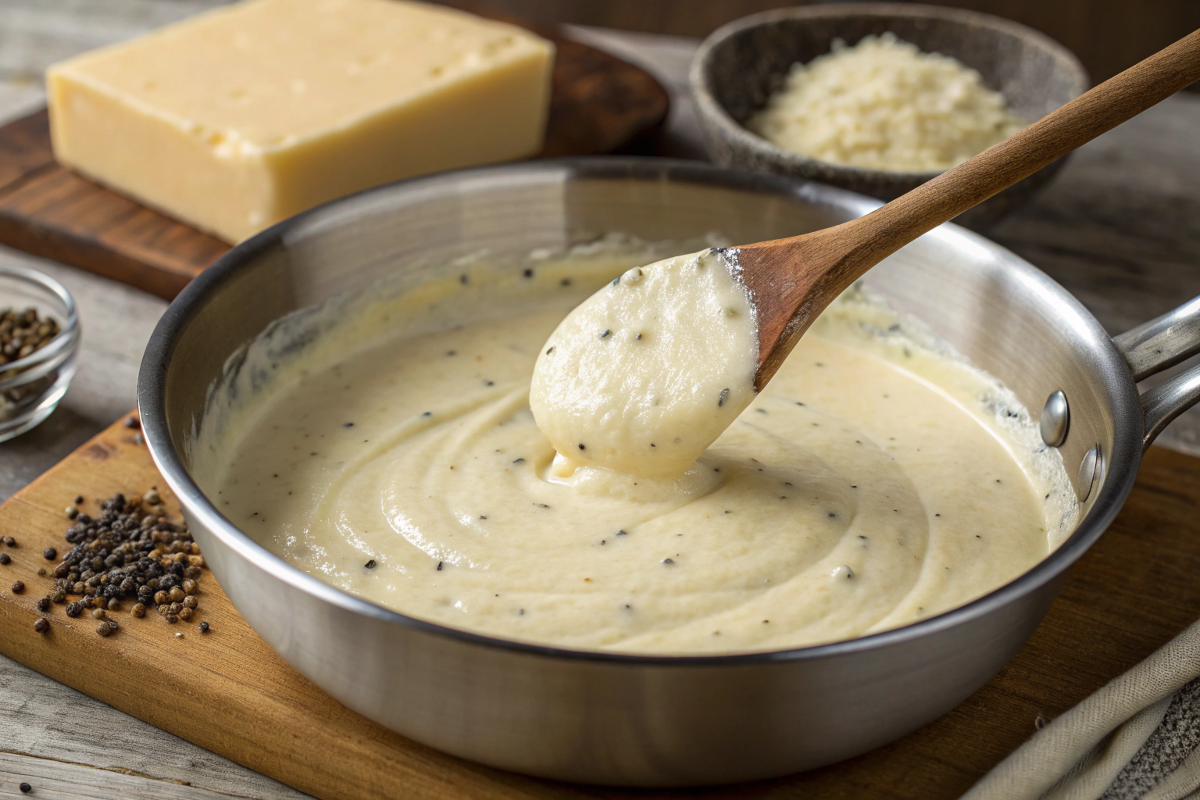
To make the Alfredo sauce even tastier, let’s add some seafood flavor! You can do this by adding a little seafood stock or broth. This gives the sauce a richer, deeper taste. A splash of white wine or lemon juice will add brightness and acidity. It helps balance the richness of the cream.
Don’t be afraid to experiment with herbs and spices too! A pinch of red pepper flakes will add a little heat. Fresh or dried herbs like parsley, chives, or tarragon can add subtle flavor. Taste the sauce as you go and adjust the seasonings until you get the flavor you love. Remember, you can always add more, but you can’t take it away! A well-seasoned sauce is key to a delicious Lobster, Crab, and Salmon Alfredo. Craving a simpler dessert? These Mini Cinnamon Rolls are perfect.
For another delicious option, check out Natasha’s Kitchen’s Creamy Tuscan Salmon. It’s a flavorful and easy dish that’s perfect for a weeknight meal.
Assembling the Lobster, Crab, and Salmon Alfredo
Cooking the Pasta
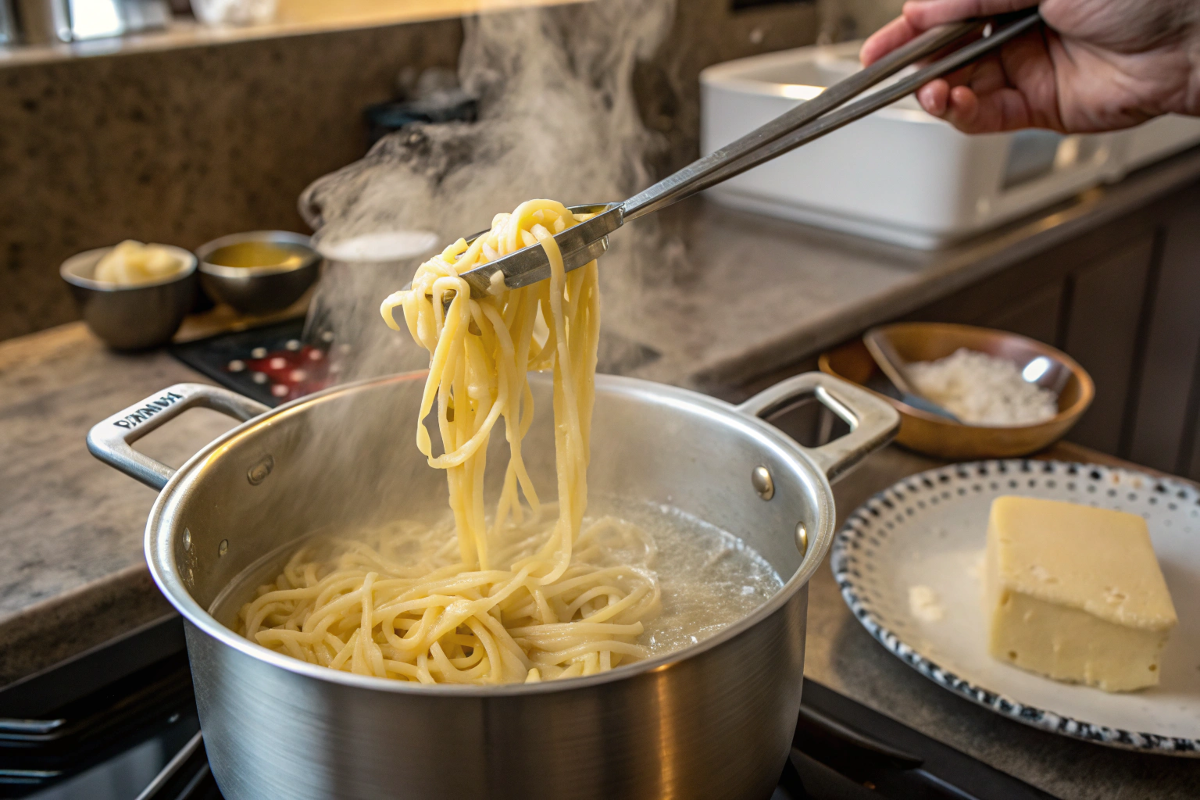
Time to cook the pasta! Long, flat pasta shapes like fettuccine or linguine work best with Alfredo sauce. The sauce clings nicely to these shapes. Cook the pasta according to the package directions. You want it to be “al dente,” which means “to the tooth” in Italian. It should be firm but not crunchy.
Don’t forget to salt the pasta water generously. This seasons the pasta from the inside out. Before you drain the pasta, save about a cup of the starchy cooking water. This “pasta water” can be used to thin out the Alfredo sauce if needed. It also helps the sauce stick to the pasta better.
Combining the Ingredients

Now, let’s put it all together! Gently fold the cooked lobster, crab, and salmon into the Alfredo sauce. Be careful not to break up the seafood too much. Add the drained pasta to the sauce. Toss everything together until the pasta is evenly coated.
If the sauce seems too thick, add a little pasta water at a time until you reach the desired consistency. You want the sauce to be creamy and coating, but not too heavy. Try serving this dish with some Crispy Fried Cornbread for a truly satisfying meal.
Plating and Garnishing
Let’s make it look pretty! Spoon the Lobster, Crab, and Salmon Alfredo into bowls or plates. Presentation is key to a truly enjoyable meal. A sprinkle of fresh herbs like parsley or chives adds a pop of color and flavor.
A lemon wedge on the side is a nice touch. Guests can squeeze a little lemon juice over their pasta for extra brightness. Don’t forget some extra grated Parmesan cheese for those who want more cheesy goodness! You can also add a sprinkle of black pepper for a final touch. Enjoy your beautiful and delicious creation! Looking for a different seafood dish? Try this recipe for Seafood Alfredo from Allrecipes.
Frequently Asked Questions
Easy crab and salmon alfredo
Want a quicker version? Use pre-cooked ingredients! Buy canned or pre-cooked crab meat and cooked salmon. Simply add them to your Alfredo sauce and pasta. It’s a shortcut that doesn’t sacrifice flavor. You’ll still have a delicious and satisfying meal in less time.
Creamy crab and salmon alfredo
Love extra creamy Alfredo sauce? Use heavy cream instead of milk or half-and-half. For even more richness, add a spoonful of cream cheese to the sauce while it’s cooking. Don’t forget that magical pasta water! A little bit stirred into the sauce makes it extra smooth and creamy. It helps everything come together beautifully.
Easy salmon Alfredo recipe
Just want salmon? No problem! Skip the lobster and crab. This simplified Salmon Alfredo focuses on perfectly cooked salmon and a delicious sauce. It’s a quicker and easier way to enjoy a flavorful seafood pasta dish. It’s perfect for a weeknight dinner.
Easy crab Alfredo recipe
Craving crab? Make it simple! Leave out the lobster and salmon. Use good quality canned or pre-cooked crab meat. Toss it with your homemade or store-bought Alfredo sauce and pasta. It’s a fast and flavorful meal that’s perfect for any occasion. Enjoy the delicious taste of crab without the fuss!
Conclusion: Enjoying Your Culinary Masterpiece
You did it! You made an amazing Lobster, Crab, and Salmon Alfredo. This dish is perfect for a fancy dinner party or a special night in. Take a moment to enjoy the delicious flavors and how great it looks.
Share this recipe with your friends and family. They’ll be so impressed! Get ready for lots of compliments. Most importantly, enjoy every bite of your delicious seafood pasta. You deserve it! Now, dig in!
Print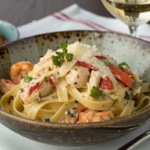
Introduction to Lobster, Crab, and Salmon Alfredo
- Prep Time: 10
- Cook Time: 10
- Total Time: 18
- Category: lunch
- Method: N/A
- Cuisine: america
Description
Indulge in a luxurious seafood feast with this creamy, flavorful Lobster, Crab, and Salmon Alfredo. Perfect for special occasions!
Ingredients
4. Ingredient List:
* Lobster (quantity based on size, approximately 1–1.5 lbs)
* Crab (quantity based on preference, approximately 1 lb fresh or 1 can pre-cooked)
* Salmon (quantity based on preference, approximately 1 lb)
* Pasta (fettuccine or linguine, approximately 1 lb)
* Butter (amount not specified, estimate 1/2 cup)
* Heavy cream (amount not specified, estimate 1 pint)
* Garlic (amount not specified, estimate 4 cloves)
* Parmesan cheese (amount not specified, estimate 1 cup grated)
* Lemon (1, for juice and garnish)
* Parsley (fresh, for garnish, amount not specified)
* Chives (fresh, for garnish, amount not specified)
* Salt (to taste)
* Pepper (to taste)
* Seafood stock or broth (optional, amount not specified)
* White wine or lemon juice (optional, amount not specified)
* Red pepper flakes (optional, to taste)
* Dried herbs (optional, to taste)
Instructions
5. Preparation Instructions:
1. Cook Lobster: Boil or steam lobster until cooked through (8-15 minutes). Let cool, then extract meat from claws, tail, and body.
2. Prepare Crab: If using fresh crab, clean and extract meat. If using pre-cooked, thaw if frozen and drain if canned.
3. Cook Salmon: Pan-sear, bake, or poach salmon until cooked through (internal temperature of 145°F).
4. Make Alfredo Sauce: Melt butter in a saucepan. Add minced garlic and cook until fragrant. Pour in heavy cream and bring to a simmer. Reduce heat and stir in Parmesan cheese until melted and smooth. Season with salt and pepper. Optionally enhance with seafood stock, white wine/lemon juice, and herbs/spices.
5. Cook Pasta: Cook pasta al dente according to package directions. Reserve pasta water.
6. Combine Ingredients: Gently fold seafood into Alfredo sauce. Add cooked pasta and toss to coat. Adjust sauce consistency with pasta water if needed.
7. Plate and Garnish: Serve pasta in bowls or plates. Garnish with fresh parsley, chives, lemon wedges, and extra Parmesan cheese.
Notes
Use high-quality ingredients for best flavor. Substitute half-and-half or milk for heavy cream if needed. Dried herbs can be substituted for fresh. Adjust seasoning to taste. Recipe can be simplified by using pre-cooked crab and/or omitting lobster and/or crab.
Nutrition
- Serving Size: N/A
- Calories: N/A
- Sugar: N/A
- Sodium: N/A
- Fat: N/A
- Saturated Fat: N/A
- Unsaturated Fat: N/A
- Trans Fat: N/A
- Carbohydrates: N/A
- Fiber: N/A
- Protein: N/A
- Cholesterol: N/A
Keywords: Crab, Salmon, Alfredo, Lobster, Seafood, Pasta, Creamy, Delicious, Luxurious, Dinner Party, Special Occasion, Easy, Quick Nutritional Information (Approximate):
